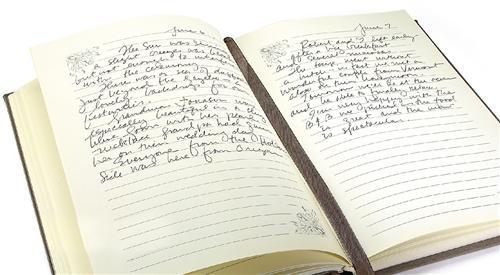Sign up for the Family Tree Newsletter Plus, you’ll receive our 10 Essential Genealogy Research Forms PDF as a special thank you!
Get Your Free Genealogy Forms
"*" indicates required fields
A. Documentary editors, who transcribe historical papers, follow guidelines for precisely what you’re doing with your great-grandfather’s journals. You can transcribe the journals verbatim, but if they’d be difficult for your family to read, it’s perfectly acceptable to correct the spelling and insert punctuation — provided you say you’re doing this in the introduction to the journals. There, include a short sample paragraph showing your great-grandfather’s exact usage, followed by your edited version.
To indicate an undecipherable word, use a question mark within brackets, like this: “I walked to Hunter’s dry goods [?] today.” Or if you can guess what the word is from the context, include it in brackets: “I walked to Hunter’s dry goods [store] today.” Similarly, if you can make out some of the letters, bracket the ones you don’t know: “I walked to Hunter’s dry goods store today.” Basically, surround with brackets any writing you insert into your ancestor’s.
ADVERTISEMENT


